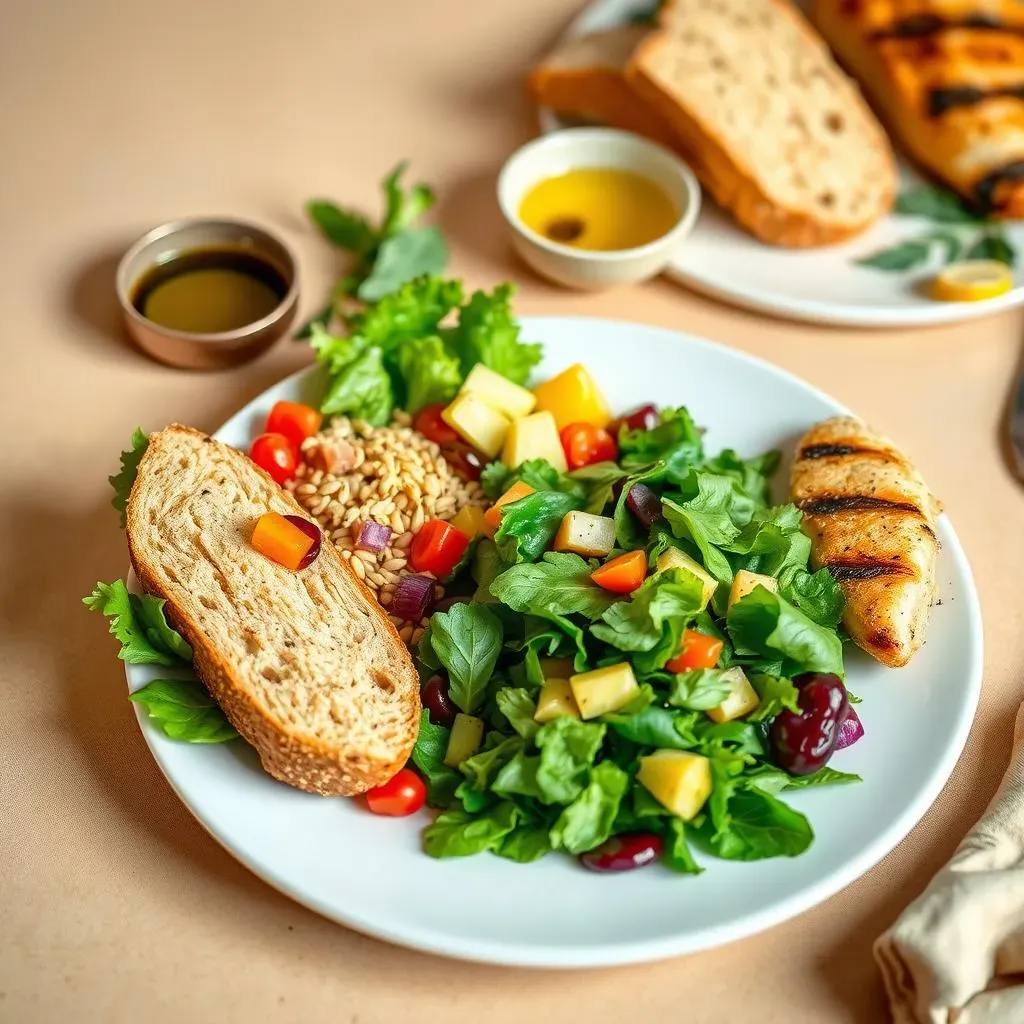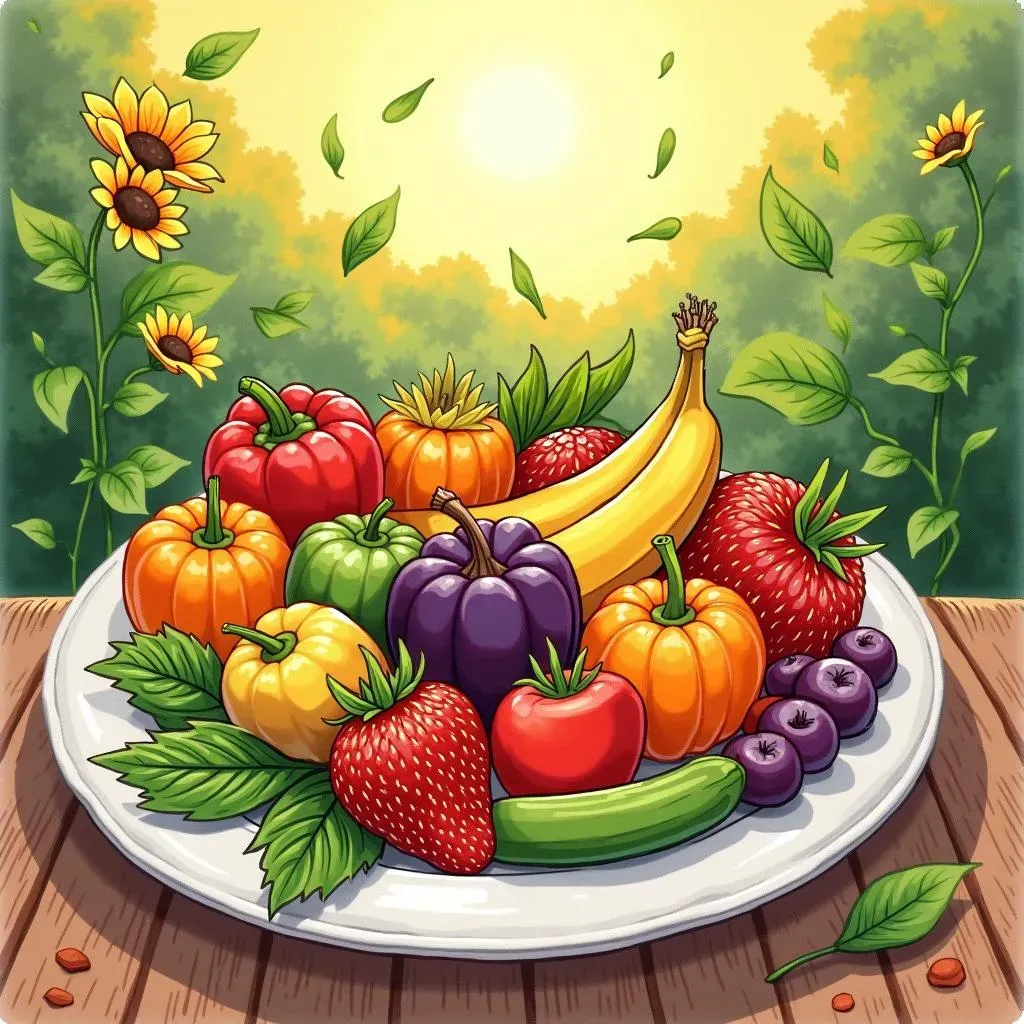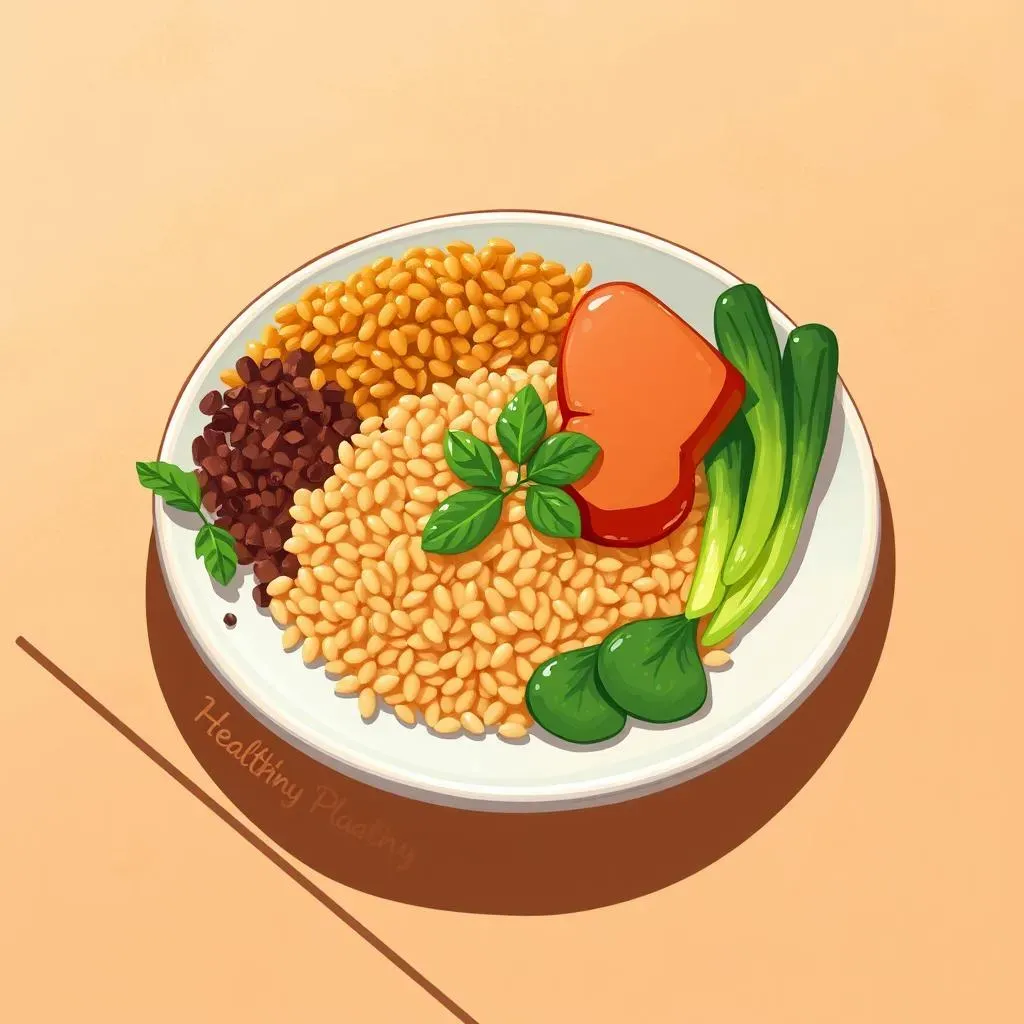Table of Contents
Ever stared at your dinner plate wondering if you're eating right? You're not alone! Figuring out "what should a healthy dinner plate look like" can feel like solving a puzzle. There's so much talk about diets and calories, it's easy to get lost. This article will cut through the noise and show you a simple, science-backed approach to building balanced meals. We'll explore the key components of a healthy plate, focusing on proportions that actually work for your body and the planet. Forget strict rules and complicated formulas; we're all about practical, easy-to-follow advice. We will break down the ideal meal into simple steps, looking at how to balance your servings of veggies, whole grains, and proteins, and even touch on the importance of plant-based oils. By the end of this article, you will have a clear picture of how to create meals that are not only good for you, but also sustainable and enjoyable. So, let's get started and make mealtime a little less stressful and a lot more nutritious.
Building a Healthy and Balanced Diet: What Your Plate Needs

Building a Healthy and Balanced Diet: What Your Plate Needs
let's talk about making your plate a powerhouse of goodness. It's not about counting calories or feeling restricted. It's about balance and making smart choices. Think of your plate as a pie chart, and each slice has a job. Half of your plate should be filled with colorful veggies and fruits. I'm talking about the stuff that makes you feel vibrant and energized. Don't be shy with variety; the more colors, the more nutrients you're getting. Then, a quarter of your plate is reserved for whole grains. These are your slow-burning energy sources, keeping you full and focused. Think brown rice, quinoa, or whole-wheat bread, not the white stuff. Finally, the last quarter is for protein, the building blocks of your body. Choose lean options like chicken, fish, beans, or lentils. And don't forget healthy plant oils, like olive oil, in moderation. These are essential fats that support your health. It's all about building a foundation that works for your body, not against it.
Plate Section | Food Group | Examples |
|---|---|---|
Half | Vegetables and Fruits | Spinach, carrots, apples, berries |
Quarter | Whole Grains | Brown rice, quinoa, whole-wheat bread |
Quarter | Protein | Chicken, fish, beans, lentils |
Small amount | Healthy Plant Oils | Olive oil, avocado oil |
Your Plate and the Planet: Sustainable Eating Choices

Your Plate and the Planet: Sustainable Eating Choices
Eating Green: It's Easier Than You Think
so we’ve nailed the healthy plate thing, but what about our planet? It turns out that what's good for you is often good for the Earth, too. Choosing sustainable options isn't as hard as you might think. It’s about being a bit mindful of where your food comes from and how it's produced. Think about it, if we all start making better choices, we can make a big difference. And it doesn't mean you have to become a full-time farmer; small changes can add up to make a huge impact.
Making Smart Choices
One easy way to be more sustainable is to eat more plants. Vegetables, fruits, beans, and lentils generally have a lower carbon footprint than meat. That doesn't mean you have to go full vegan, but even swapping out some meat meals for plant-based ones can help. Also, try to buy local and seasonal produce. It cuts down on transportation emissions and supports local farmers. Plus, food that's in season just tastes better, right? Consider reducing your food waste, as well. Plan your meals, store food properly, and get creative with leftovers. It's about respecting the resources that go into our food.
Sustainable Choice | Why It Matters |
|---|---|
More Plants | Lower carbon footprint, less resource intensive |
Local & Seasonal | Reduced transportation emissions, supports local economies |
Less Food Waste | Conserves resources, reduces landfill burden |
Mindful Consumption | Reduces over-consumption and environmental impact |
Small Steps, Big Impact
Remember, you don't have to be perfect to make a difference. It's about making conscious choices whenever you can. Maybe try a "Meatless Monday" or visit your local farmers market. Even small actions like choosing products with less packaging or bringing your own bags to the grocery store can contribute to a more sustainable food system. It’s about making choices that are good for you and the planet, not just one or the other. We all have the power to make a positive impact, one plate at a time.
Frequently Asked Questions About a Healthy Dinner Plate

Frequently Asked Questions About a Healthy Dinner Plate
Alright, so you've got the basics down, but I know what you're thinking. There are always questions, right? "What if I don't like veggies?" or "Is it okay to have carbs?" It's totally normal to have these thoughts swirling around. Let's tackle some of the most common ones I hear. First off, no, you don't have to become a rabbit and only eat greens. Variety is key! If you're not a big fan of one veggie, try another. There are so many out there. The idea is to find things you actually enjoy, so healthy eating doesn't feel like a chore. And yes, carbs are your friends, but the *right* kind of carbs. We're talking whole grains, not the processed stuff. Think of them like fuel for your body, not something to be avoided.
Another question I often get is about portion sizes. It's not about being super strict, but about being mindful. Use your plate as a guide. If you're still hungry, add more veggies or a small serving of whole grains. Listen to your body's cues. Don't feel like you have to finish everything on your plate just because it's there. And lastly, don’t stress too much about perfection. It’s about progress, not perfection. If you have a less-than-ideal meal, just get back on track with the next one. It's about building sustainable habits that work for you. It's about balance, not deprivation.
Question | Answer |
|---|---|
What if I don't like vegetables? | Try different veggies and cooking methods to find what you enjoy. |
Are carbs bad? | No, focus on whole grains for sustained energy. |
How strict should I be with portion sizes? | Use your plate as a guide, listen to your body's cues. |
What if I have a less-than-ideal meal? | Get back on track with the next meal, it's about progress. |
Wrapping Up: Your Path to a Healthier Plate
So, there you have it – a simple guide to creating a healthy dinner plate. It's not about strict diets or complicated rules. Instead, it’s about making informed choices that nourish your body and respect our planet. Remember, half your plate should be filled with colorful fruits and vegetables, a quarter with whole grains, and a quarter with lean protein. Don't forget those healthy plant oils, and make sure to stay hydrated. This approach, backed by science, is about building a sustainable eating habit, not a temporary fix. By focusing on quality and balance, you can transform your meals into sources of energy and well-being. This journey to a healthier you is a marathon, not a sprint, so be patient with yourself, and enjoy the process of building a better plate, one meal at a time.